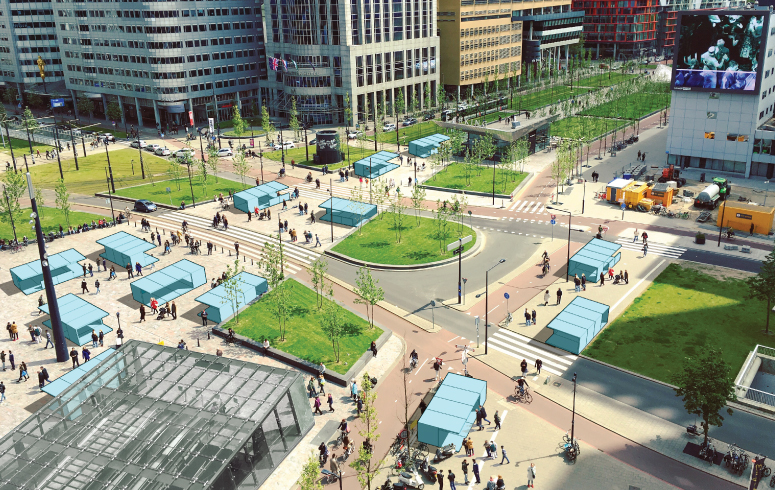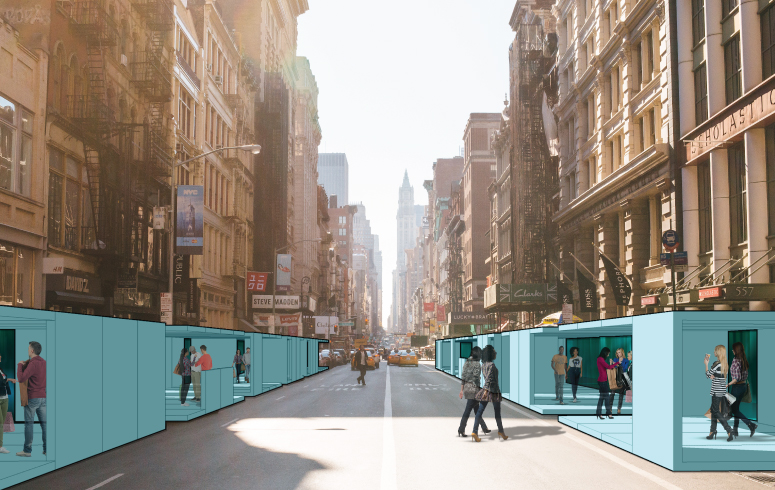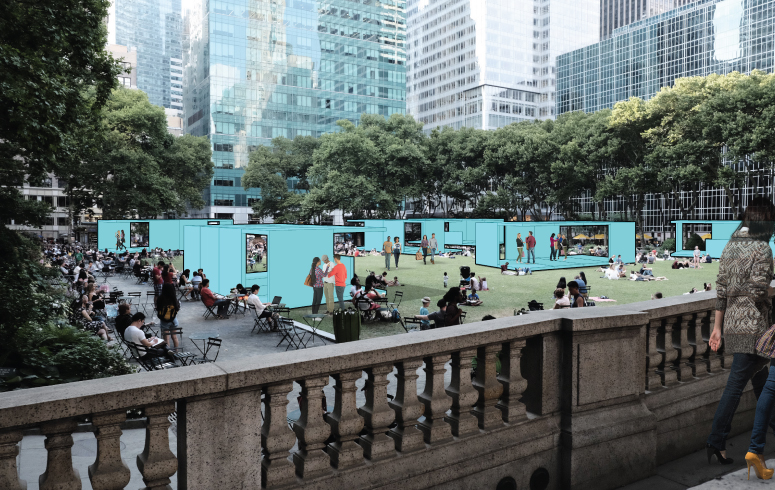Part Two of the Outdoor Urban Retail series explored the modular POD structure and its versatility. The combinations of the different sub-sections of the POD allow for customization to suit the needs of the local merchant or retailer. Gathering these distinct modules will provide a unique opportunity which can include various retail shops, food vendors and other miscellaneous ancillary uses creating an outdoor community space for local customers.

As one enters the outdoor retail space, large expansive windows provide visual connections for patrons from the exterior to the interior space. Creative displays of merchandise at the glazing can draw shoppers in. The unique composition of sections will yield unique footprint of products where the patron can move about the POD or from one module to the next. This interest creates movement and guides the customers to visit each POD.
The collections of the PODs can create a notable point in an urban context. The backdrop or urban setting will amplify the atmosphere of the community of the PODs. If located in a large expansive area, such as a park, the atmosphere will feel spacious and open allowing the community to gather, shop and socialize. Operable partitions can heighten the blurred boundaries of the interior or exterior space.

If located along the street, parallel to a brick-and-mortar store, a shopper may have a heighten sense of the urban environment with the POD structures echoing the surrounding taller buildings. With a store readily nearby, it can assist with backstock and additional support for the POD structure. The added layer of workers walking back and forth will add both complexity and density to the site. The context will offer the consumer a different feel also from city to city.
Material selection will also govern the experience of the consumer. The experience will be dictated using the warm or cold color palette. Sustainable finishes that can be painted yearly can offer an innovative design next season. It allows for customization by the tenant for their own branding.

The intent of these communities is not to be permanent. Rather, the seasonal or temporal quality will help draw shoppers to these areas. Creating these limited time experiences can boost the feel of community in areas that have been lacking social interactions and create an immersive experience for each customer.
About the author
Jessica Kim, RA, LEED AP BD+C, graduated from Carnegie Mellon University with a Bachelor of Architecture degree. She joined BRR in 2019 and brought 10 years of retail design experience to our team. Jessica has worked with a variety of luxury retail brands in New York City and across the country. She currently leads a team working with one of our confidential retail clients as they introduce a new store concept nationwide. Jessica has experience working on both the client side and the design consultant side of the industry which gives her a depth of knowledge and allows her to think about each project from a holistic approach. She continually challenges our clients to elevate the everyday design experience and how that affects the brand and the consumer. Email her.



